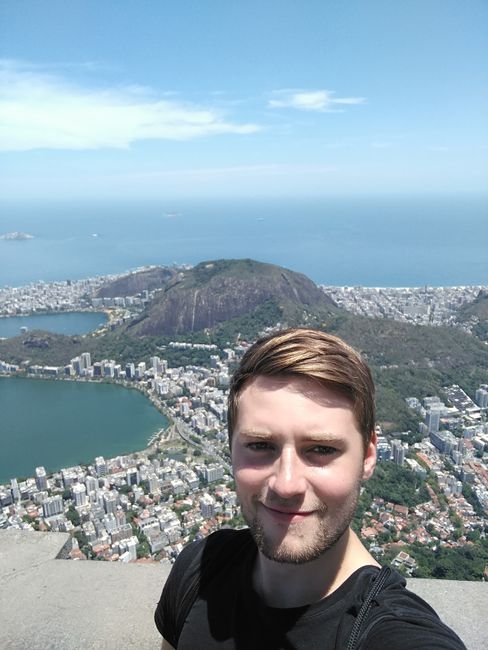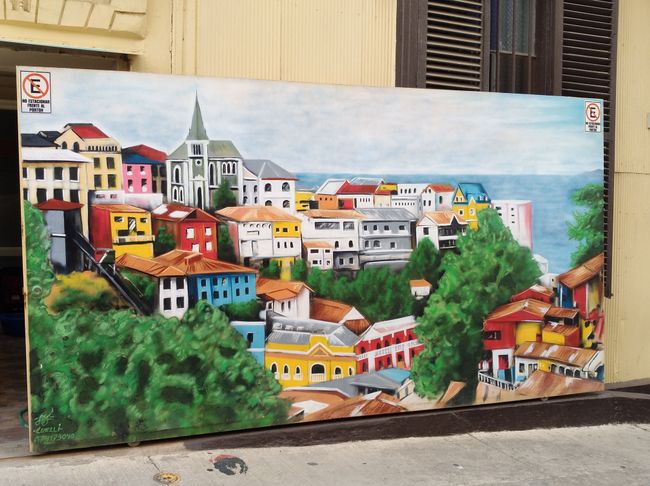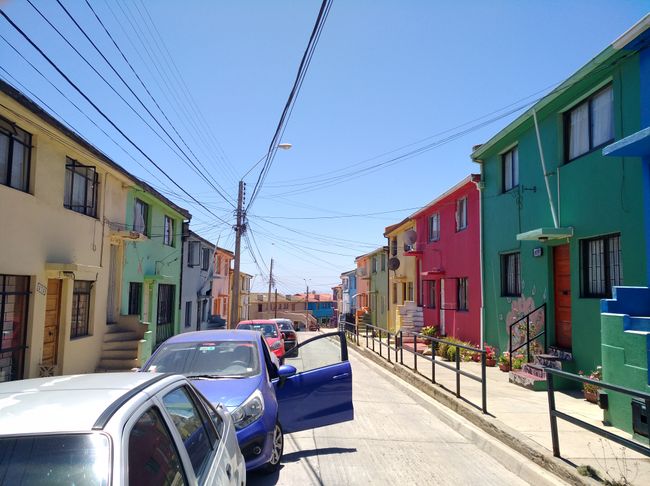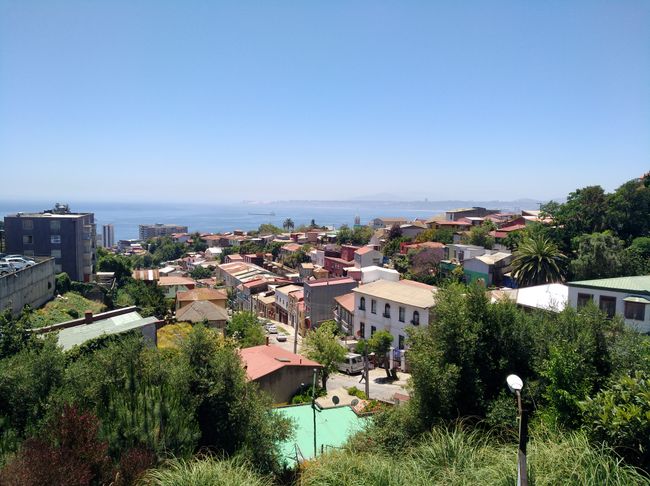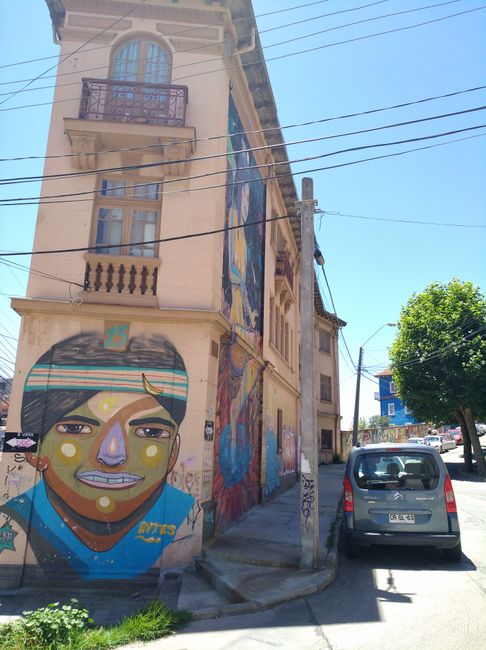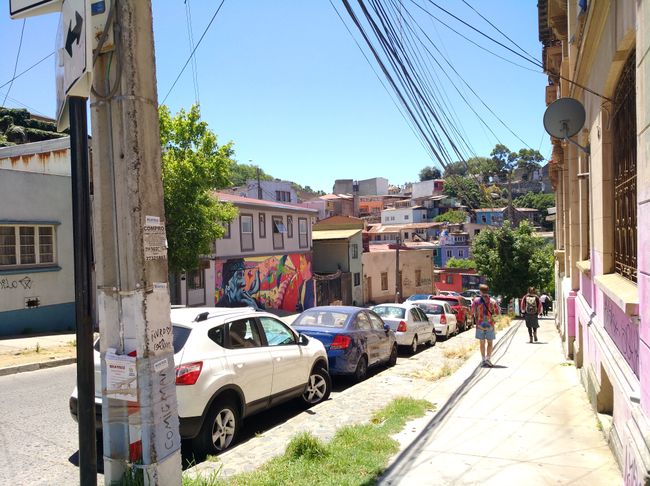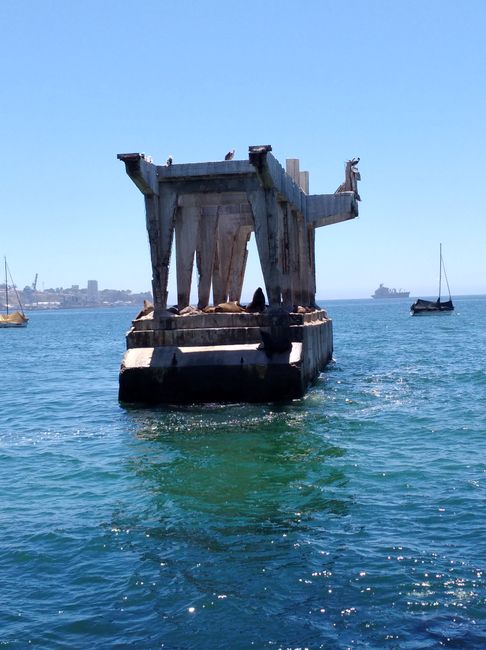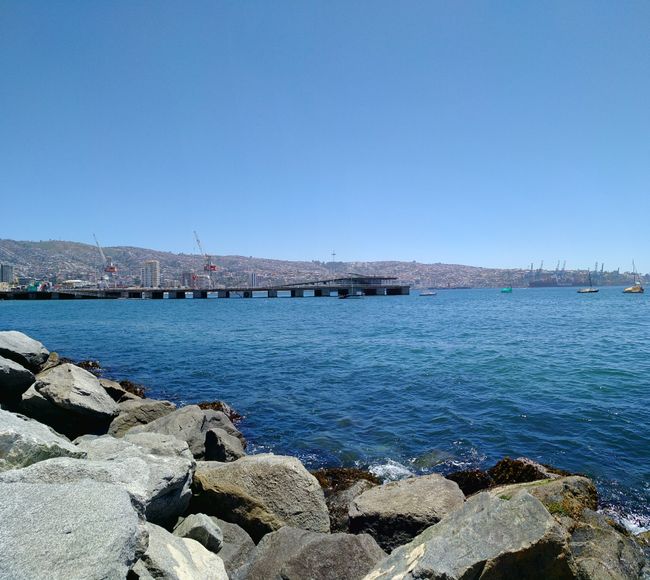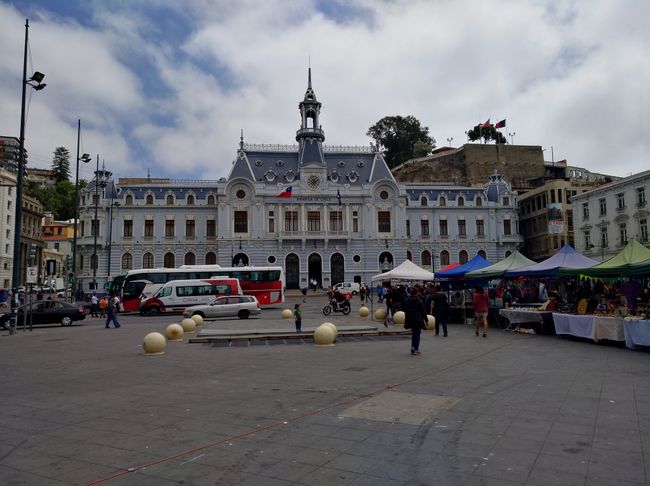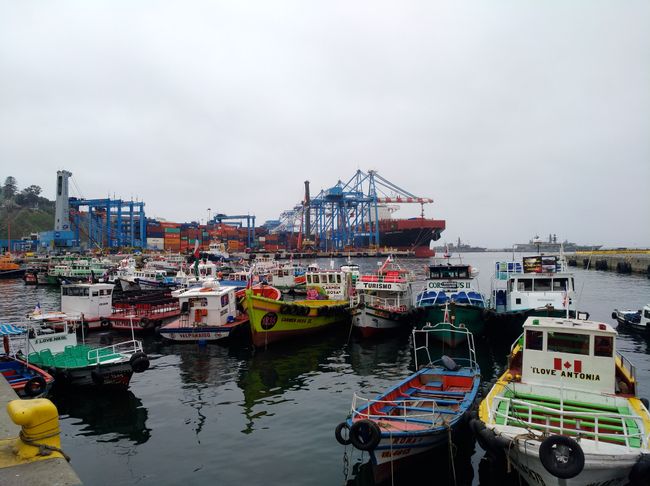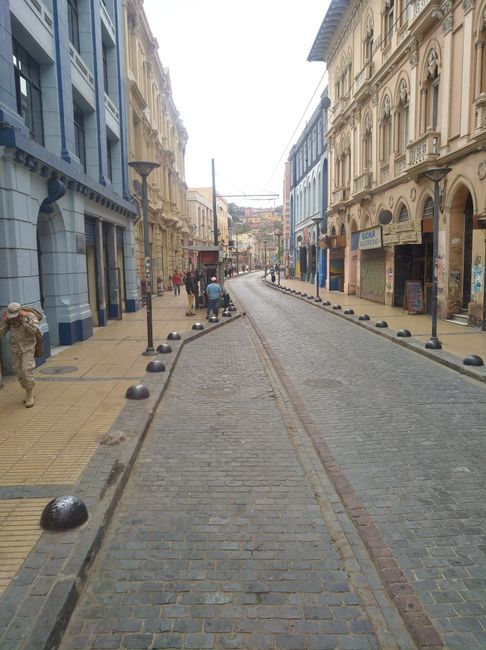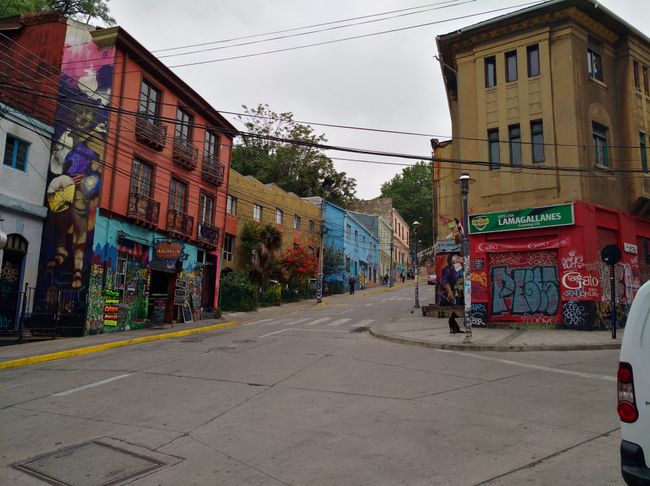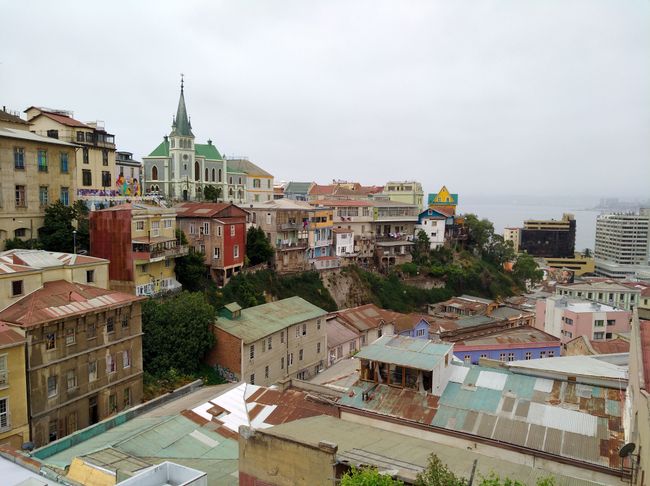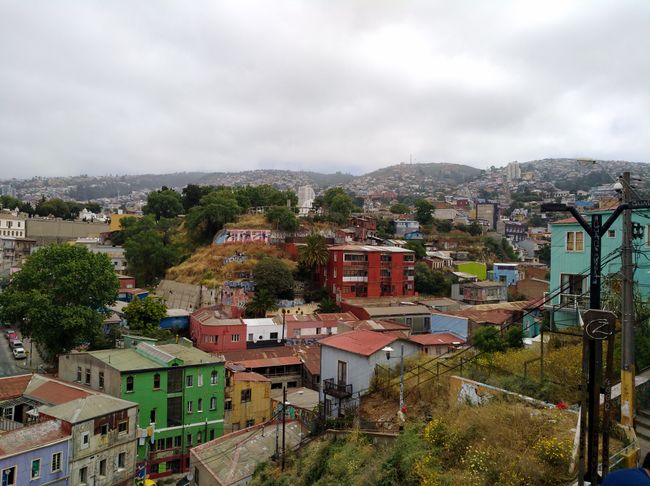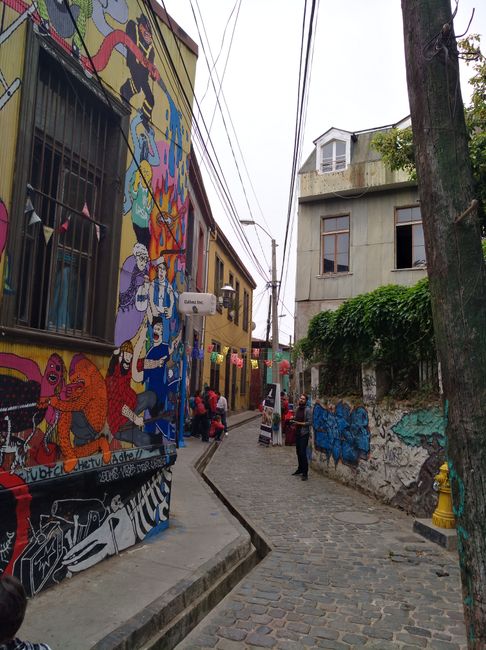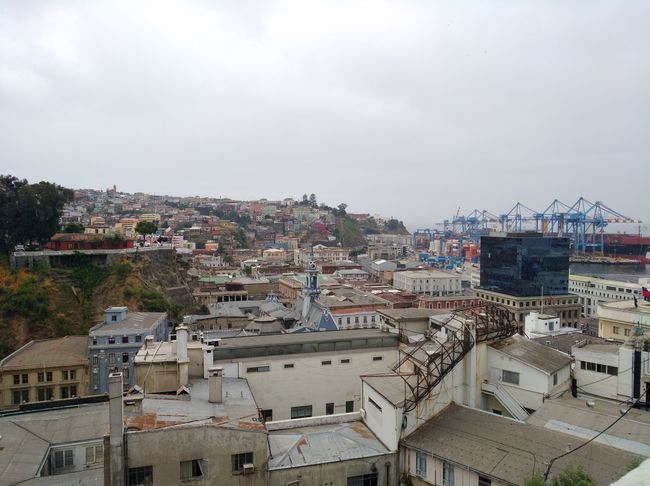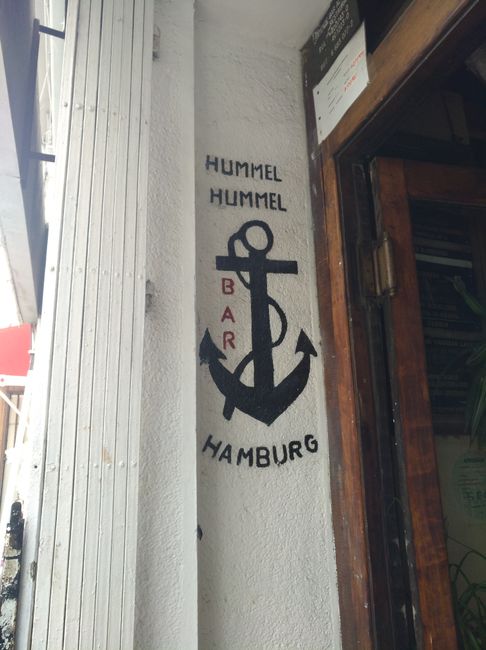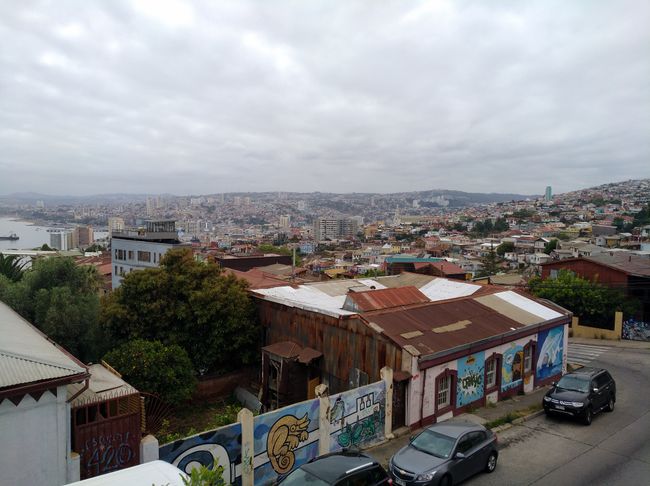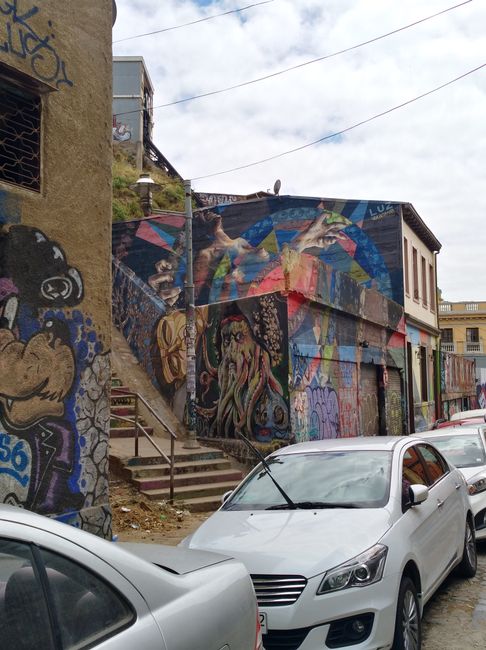Valparaíso
Diterbitkan: 27.11.2017
Berlangganan Newsletter
After spending a few days in Santiago, I wanted to see something else in Chile. Due to the elongated shape of Chile, it's difficult to travel across the entire country at once. But Nicolas gave me a tip that there is a small city called Valparaíso on the Pacific coast that is worth a visit.
So, I took the subway with all my luggage from Santiago to the Pajaritos station and then took a bus for an hour and a half towards the west to Valparaíso, which means 'Paradise Valley' in German.
However, I didn't find much resemblance between a paradise valley and the city. It definitely has its own charm and some beautiful parts, but overall it's pretty dirty and covered in graffiti. Unfortunately, the ugly tags and graffiti outweigh the beautiful artworks.
Upon arriving at the bus terminal, I needed to get to the hostel. I decided to take a taxi, but unfortunately, the driver didn't know exactly where my hostel was located. He dropped me off somewhere and I had to find the rest on my own. Luckily, I eventually found it and settled into my relaxed six-bed room.
The hostel was very laid-back and the people were friendly. I immediately met two other travelers from Germany, but both of them were leaving the next day, one in the morning and the other later in the day.
In the evening, the three of us went down to the city to grab something to eat. We decided to try a döner-like shawarma. However, the shawarma was poorly rolled, making dinner more of a massacre. But to be honest, it doesn't usually end differently with a döner in Germany either.
The next day, I joined Moritz, who was staying in Valparaíso for a bit longer, for a city tour. Since Valparaíso is surrounded by about 42 hills and most people live on those hills, a trip to the city or the viewpoints always involves climbing a lot of stairs or a steep ascent, which makes it even more exhausting.
We made our way up to the top of the hill, only to find out that the view was blocked by two sheet metal huts. However, they probably have the best view of the city from their balcony.
Next, we walked all the way back down to the valley and to the coast. Unfortunately, the view of the sea was obstructed by railway tracks and construction fences, so we had to walk quite a distance until we reached a section where the fence opened and we could access the water. There was a big concrete block in the water that was supposed to be part of the harbor facilities but was never completed. It has now become a home to a large colony of seals. They sunbathe and play there. The younger seals have quite a bit of trouble getting out of the water and it's quite funny to watch.
When Moritz left the next day, I joined another one of the free walking tours to explore the rest of the city and learn more about the cultural capital of Chile.
Valparaíso used to be much more significant as a port city. Especially from 1848 onwards, when the California Gold Rush began, Valparaíso was crowded with sailors. Valparaíso's port was the largest and most important port on the way from Europe to California. Many sailors liked the small city and settled there, which is why influences from different countries can still be found in Valparaíso today. For example, there is a restaurant and bar called 'Hamburg'.
After the opening of the Panama Canal in 1914, sailors naturally avoided the long journey around Cape Horn, and Valparaíso's golden years were over.
Today, Valparaíso still has many buildings in the old style and it's a relaxed city for students and artists. Valparaíso also has 16 preserved elevators (ascensores), of which 9 are still functioning. Originally, there were 30 of them since 1883, which made it easy to reach the most important hills comfortably.
I spent a total of three nights in Valparaíso before returning to my old hostel in Santiago for two more nights. Initially, I didn't like it there so much, but by now, I felt almost at home.
Berlangganan Newsletter
Menjawab

